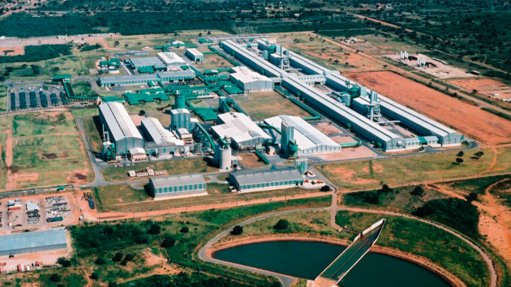The butterfly effect
The butterfly effect is a terribly sweet observation that the fluttering of the wings of a butterfly can be the trigger for a massive destructive storm.
Taking the power generated by the wings of a butterfly (of the order of microwatts, if not less) into account, the system surrounding the butterfly would have to be very unstable for the fluttering to change it. The movement of motor-car windscreen wiper blades produces way more power than a butterfly’s wings and yet the traffic jam on the N2, in Cape Town, does not result in a howling north-east storm, in my experience. It is way more cool to refer to the ‘butterfly effect’ than the ‘SUV wiper-blade effect’ but, should this idea catch on, we could have people describing a whole lot of effects causing a catastrophe: for example, the ‘Merc 180 ºC wiper-blade effect’, the ‘flapping beach flag shark warning effect’, the ‘passenger train door closing effect’, and so on.
You get the idea? Where this is going is that, once some sort of idea takes hold in the mind of the public, and once some ‘scientists’, rich with grant money, write a paper about the need to limit speeds of wiper blades and passenger rail doors, then will follow conferences and more grant money and calls for government action, and so on. Ignored is the fact that no system, worldwide, is so unstable that it will be affected by butterfly wings.
It is only recently that it has been realised that, with the progress through ‘power lines cause cancer’, bird flu, swine flu, Y2k and now climate change, the public will swallow anything, as long as there are enough posts about it on the Internet. Our most recent ‘world disaster’ is the coronavirus. At the time of writing, the virus had infected more than 95 000 people and killed at least 3 300 worldwide. This is not a lot, compared with the annual deaths by motor-vehicle accident in South Africa or worldwide – in South Africa, the figure is about 15 000, and worldwide it is 1.5-million. It is, however, if you like, a new way to die, and it contains all the elements which scare people: plaguelike epidemics, deaths, socially transmitted illness. It is interesting to see that Ebola, a real deadly disease with a 40% fatality rate after infection, was not really worldwide news. The world knew about it, but it happened in Africa, which the world regards as not terribly important. But the coronavirus has been detected in Italy and boy! That’s news!
The butterfly is not pinned, however. In the 1960s, there occurred, in Britain, a real butterfly effect. Caused by London fogs. Pea soup fog (also known as a pea souper, black fog or killer fog) is a very thick greenish or blackish fog caused by air pollution that contains some poisonous gases. This is derived from the smoke given off by the burning of soft coal for home heating and in industrial processes. Smog of this intensity is often lethal to vulnerable people, such as the elderly.
The UK Clean Air Act of 1956 banned the use of coal for domestic fires in some urban areas. This and the decommissioning of coal-fired power stations (or their conversion to oil fired) resulted in a fall-off in the requirements for British coal. Coal mines closed and miners lost their jobs and, thus, strikes by miners were common.
In the 1970s, most of the UK’s electricity was produced by coal-burning power stations. Strikes by miners reduced coal stocks. To reduce electricity consumption, and thus conserve coal stocks, Conservative Party Prime Minister Edward Heath announced, on December 13, 1973, measures including the Three-Day Work Order effective from midnight on December 31. Commercial consumption of electricity was limited to three consecutive days each week. Other unions went on strike and the situation only stabilised with the election of Margaret Thatcher as Prime Minister. So, a real butterfly effect – from domestic coal to a three-day work week and a new government. And all from an Act passed in 1956.
Article Enquiry
Email Article
Save Article
Feedback
To advertise email advertising@creamermedia.co.za or click here
Comments
Press Office
Announcements
What's On
Subscribe to improve your user experience...
Option 1 (equivalent of R125 a month):
Receive a weekly copy of Creamer Media's Engineering News & Mining Weekly magazine
(print copy for those in South Africa and e-magazine for those outside of South Africa)
Receive daily email newsletters
Access to full search results
Access archive of magazine back copies
Access to Projects in Progress
Access to ONE Research Report of your choice in PDF format
Option 2 (equivalent of R375 a month):
All benefits from Option 1
PLUS
Access to Creamer Media's Research Channel Africa for ALL Research Reports, in PDF format, on various industrial and mining sectors
including Electricity; Water; Energy Transition; Hydrogen; Roads, Rail and Ports; Coal; Gold; Platinum; Battery Metals; etc.
Already a subscriber?
Forgotten your password?
Receive weekly copy of Creamer Media's Engineering News & Mining Weekly magazine (print copy for those in South Africa and e-magazine for those outside of South Africa)
➕
Recieve daily email newsletters
➕
Access to full search results
➕
Access archive of magazine back copies
➕
Access to Projects in Progress
➕
Access to ONE Research Report of your choice in PDF format
RESEARCH CHANNEL AFRICA
R4500 (equivalent of R375 a month)
SUBSCRIBEAll benefits from Option 1
➕
Access to Creamer Media's Research Channel Africa for ALL Research Reports on various industrial and mining sectors, in PDF format, including on:
Electricity
➕
Water
➕
Energy Transition
➕
Hydrogen
➕
Roads, Rail and Ports
➕
Coal
➕
Gold
➕
Platinum
➕
Battery Metals
➕
etc.
Receive all benefits from Option 1 or Option 2 delivered to numerous people at your company
➕
Multiple User names and Passwords for simultaneous log-ins
➕
Intranet integration access to all in your organisation


















